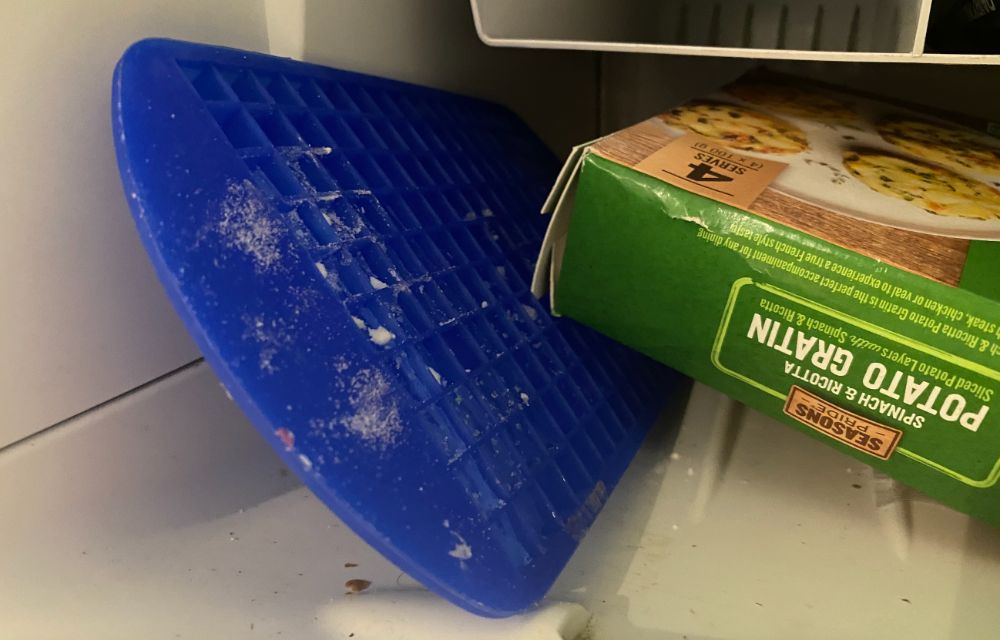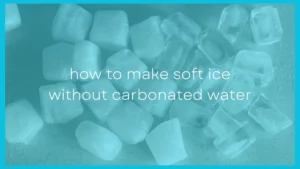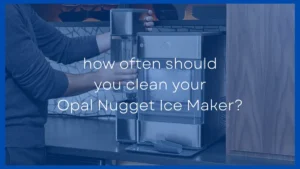Silicone ice cube trays are a great alternative to plastic ice cube trays and they come in all sorts of shapes, sizes and colors. They don't leech chemicals and are more eco-friendly. However, they aren't without their problems.
Understanding the problems of silicone ice cube trays will help you decide whether you want to opt for a silicone ice cube tray for your ice cubes or if you'd prefer to get plastic or metal ice cube trays.
Silicone ice cube trays absorb flavors, the ice could be difficult to remove, it can develop a white residue, and the colors are too bright for some. Other problems include spilling, sticking, lack of lids, and freezer burn. They are also not recyclable and can be more expensive than plastic trays.
Silicone trays are a great addition to any household, but there are downsides compared to other options such as metal or plastic.
1. They Can Absorb Odors and Flavors and Impart Them Into Your Ice

Silicon seems to be notorious for absorbing smells and odors from your fridge and freezer, especially garlic.
One of the main reasons that silicon ice cube trays taste bad is that silicon is permeable and absorbs freezer odors.
These odors and flavors get stuck to the silicon ice cube tray and when you fill them up with water to make your ice cubes the bad flavors can be absorbed into the water giving you terrible tasting ice..
Fortunately, there are many ways you can effectively get rid of these foul odors, including vinegar, baking soda, or placing them at high temperatures.
If you're looking for some foolproof ways to get those nasty odors out of your silicone ice cube trays, check out this helpful guide on how to clean silicone ice cube trays properly.
2. Ice Cubes Can Be Difficult To Get Out
One of the things that I absolutely love about plastic ice cube trays is that ice cubes are extremely easy to get out. In fact, there are easy release ice cube trays which are amazingly convenient to use.
Although silicone has excellent flexibility properties, this seems to be a disadvantage when it comes to getting ice out of the ice cube trays.
Because water expands when it freezes, this may make it difficult to get your cubes out of the silicone molds.
With silicon ice cube trays often you have to individually, one by one, pop out the ice cubes. This can get extremely tedious, especially when you're making a lot of ice or if you're using a very small ice cube tray to make nugget ice similar to the sonic restaurant.
3. They Can Get A White Residue On Them, Which Is Hard To Get Off
Silicone trays can develop a white residue from dissolved salts in the water. This generally happened when you have hard water. Calcium Sulfate, a mineral found in water, can get stuck on your silicone ice cube trays and be difficult to clean off.
Luckily, Calcium Sulfate is not harmful and can be removed by vinegar.
To avoid the white residue altogether, you can filter or soften your water before pouring it into your silicone ice cube tray.
4. They Only Come In Bright Colors
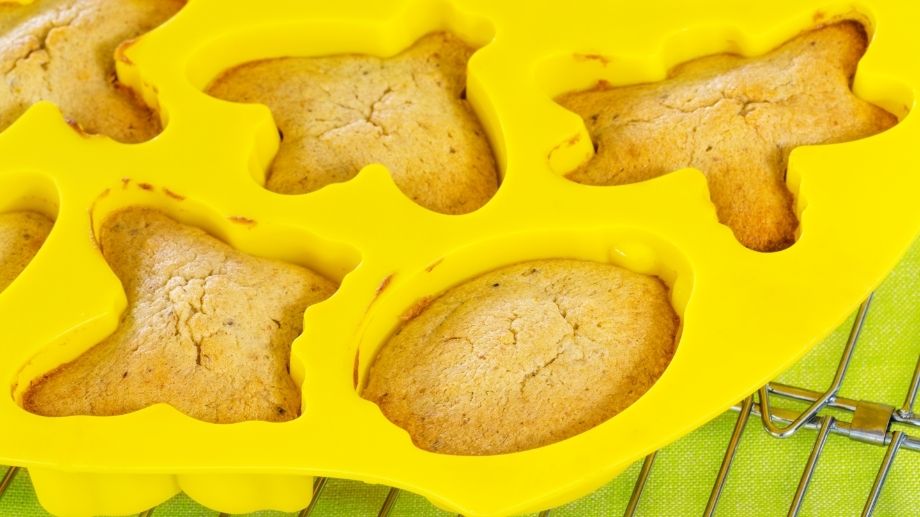
Although the color of a silicone ice cube tray won't cause any problems with the ice, some people prefer more neutral colors to match their kitchen or other home appliances.
This is where a metal or a plastic ice cube tray may come in handy for the people who like more subtle colors. See the best metal ice cube trays on the market.
5. Silicone Ice Cube Trays Are Too Flexible, Resulting In Spills
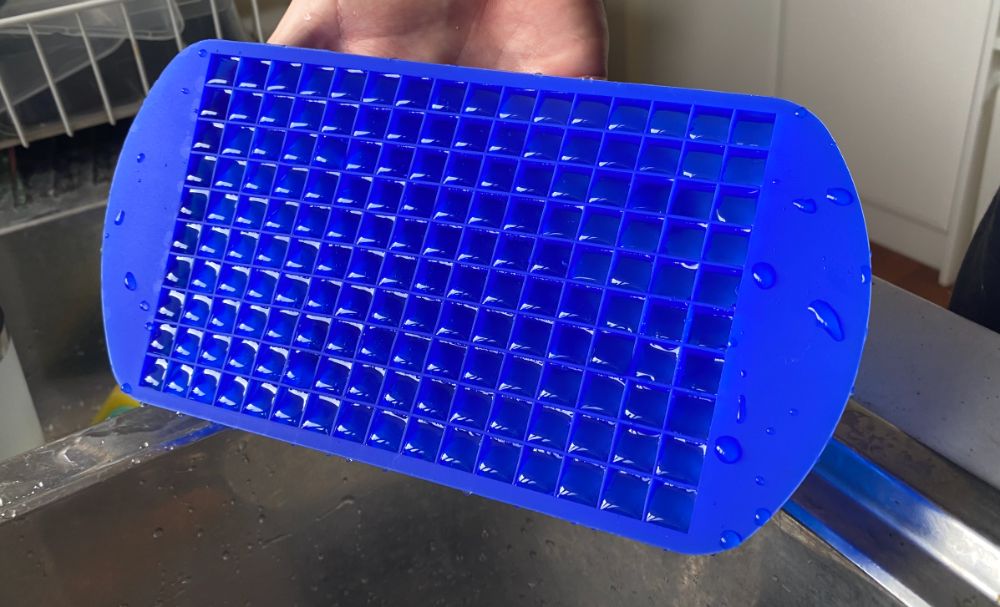
Silicone won't offer you much support when it needs to hold the weight of water. This could result in spills and your tray being filled unevenly.
I haven't had this issue with my silicon nugget ice cube tray but that's because it makes extremely small ice cubes. However, the larger your ice cubes the more likely that silicon is to deform and spill when you try to put it in the freezer.
However, you may be able to fix this problem by placing a cutting board underneath your silicone ice cube tray before filling it with water.
6. Ice Cube Can Sometimes Stick To The Tray
As mentioned earlier, water expands when it freezes, and the bottom of the tray will expand as well. This causes your ice cubes to stick to the tray.
This can also happen if you stack a few silicone ice cube trays, so stacking is not recommended.
For an easier way to remove your ice cubes from the tray check out our list of clever ice cube tray hacks for your home.
7. Most Come Without Lids – Leading To Ice Absorbing Smells
As most silicone ice cube trays are sold without lids, it could be a downfall.
Ice cube trays without lids are more prone to having foul odors and potential spills, making your drinks less hygienic.
Your safest option will be to look out for a silicone ice cube tray with a lid, as it also means you won't have to clean your freezer as often.
8. Silicone Ice Cube Trays Can Start To Smell Like Freezer Burn
If you have a silicone ice cube tray they and the ice cubes inside of them can hold on to smells picked up from the inside of your freezer.
This will make your ice cubes taste bad even if your water is fine, which is something you would want to avoid as much as you can.
9. Silicone Trays Aren't Recyclable
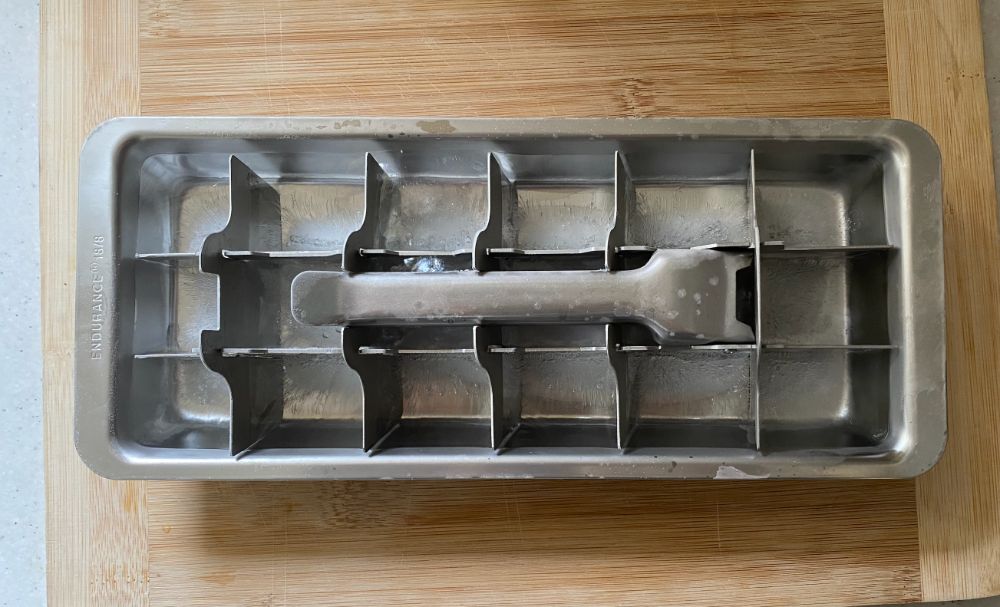
Silicone could be next to impossible to recycle, meaning old and damaged ones will take a massive amount of space in landfills.
This is a big downside for households who like to practice environmentally friendly tools in their home.
Plastic ice cube trays have this same problem but stainless steel ice cube trays are much easier to recycle and not end up in landfill. Check out out list of the best eco friendly ice cube trays.
10. They Are More Expensive Than Plastic Trays
Plastic ice cube tray seem to be the most affordable ice cube trays on the market. If you go to your local dollar store you can get ice cube trays for one dollar or even less in larger packets.
Silicone ice cube trays on the other hand tend to be slightly more expensive and depending on which brand you choose they can be quite expensive when compared to plastic ice cube trays.
If you're on a budget and just want something cheap that's going to do the job than you might want to steer away from silicon and choose a plastic instead.
Due to silicone's incredible durability and flexibility, they are more expensive than plastic trays, which are more prone to cracking and breaking.
This could influence a lot of buyer's choices who are on a budget. However, overall, the price you pay will depend on the silicone's quality.
Conclusion
Silicone ice cube trays have loads of benefits and at the end of the day the advantages surely outweigh the disadvantages.
However, you should be aware of the potential problems you could run into when you decide to buy a silicone ice cube tray rather than a plastic or metal one. This will help you to make an informed decision about which product is going to be best for you.

